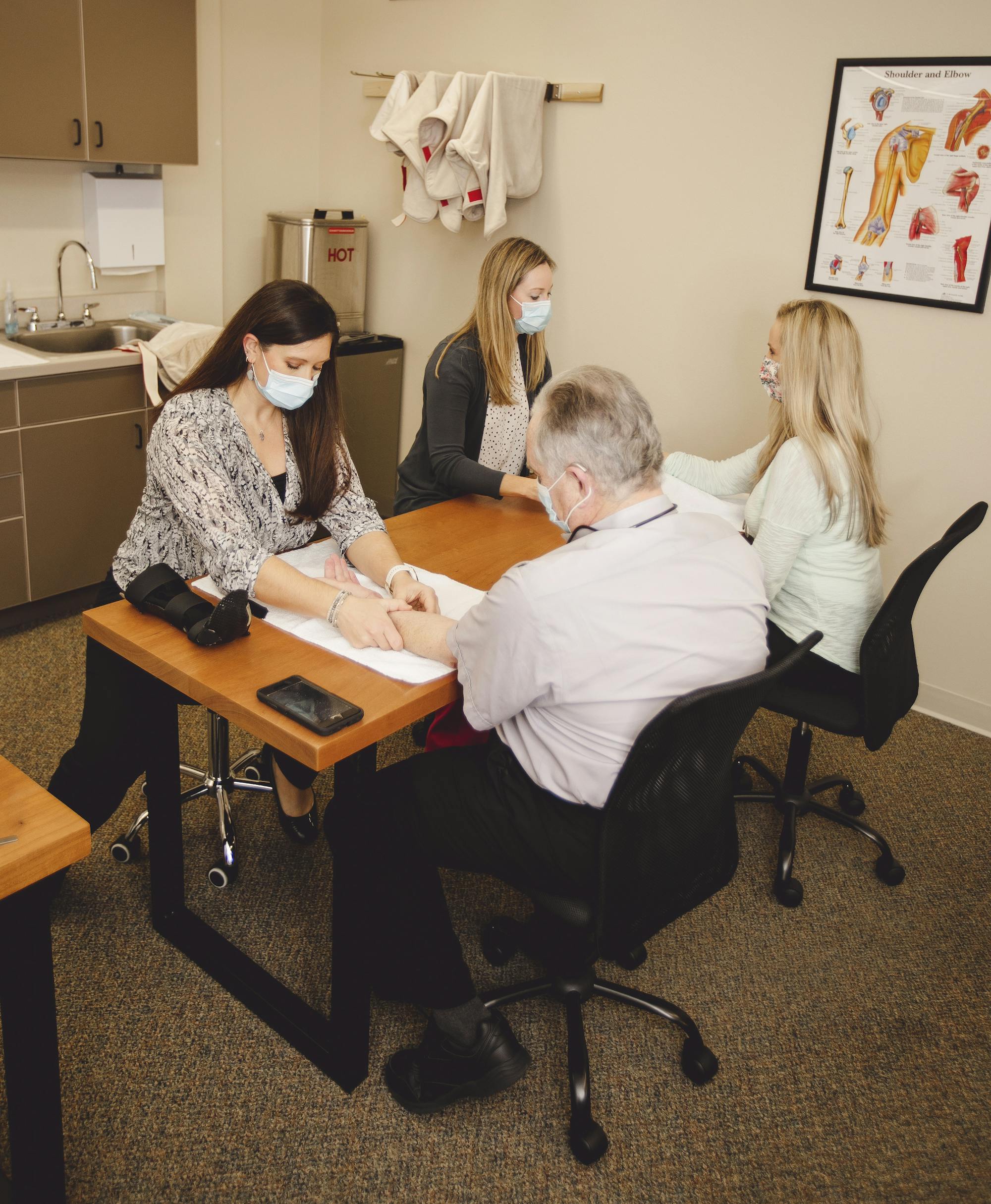- Blog
RED-S and the Evolving Female Athlete
Posted on 06-28-2025 in REDs, Sports Medicine, Female Athletes, Youth Sports & Female Triad by Dr. Sonya Ahmed

Posted on 06-28-2025 in REDs, Sports Medicine, Female Athletes, Youth Sports & Female Triad by Dr. Sonya Ahmed
The Personal Impact
Before becoming a fellowship-trained, board-certified Orthopaedic Surgeon, I was an accomplished college athlete. I had done gymnastics for about 13 years and then was the first Hall of Fame inductee for Pole Vaulting at the University of Missouri-Kansas City, where I completed my combined BA/MD in six years. I offer this context as the topic discussed in this article is both highly sensitive and deeply personal. My experience as a young woman grappling with the competitive nature of the sports I loved and their impact on my physical and mental health allows me to offer my patients a unique perspective.
While I didn’t experience a specific eating disorder or use medications to cope with the constant mental struggles that female athletes typically experience, I did struggle with being a female athlete and its toll on the human body. It’s a most profound memory of struggling with the balance of an athletic physique while staying feminine but not overdoing it. I vividly remember wrapping my legs and core with plastic wrap to aid in sweat and weight loss. I look back on this now with my education and wonder how and why this was happening. I am sure this goes on daily, likely without most of our knowledge, but that is why this topic should be brought to light and discussed.
Although my journey is not unique, it has, in many ways, guided me in my pursuit of helping other young athletes and their parents navigate the various health conditions once known as the female triad.
From Triad to RED-S
The initial female athlete triad was described in the early nineties by the American College of Sports Medicine (ACSM). By 1997, the ACSM had conceptually defined the term as a spectrum of conditions based on the presence of eating disorders, amenorrhea (the absence of menstruation) and osteoporosis. A decade later, three additional components were defined: Low Energy Availability (LEA), menstrual dysfunction and bone mineral density changes.
The next evolution in addressing this complex issue came in 2014 after a meeting of the International Olympic Committee (IOC) when the term Relative Energy Deficiency in Sport (RED-S) was defined as a complex clinical syndrome related to impaired physiological functioning. This expansion of the original triad to RED-S also included men and multiple organ system health and performance consequences, placing particular emphasis on the impact of LEA on the body.
Who’s at Risk & What to Look For
In addition to competitive athletes, those who participate in sports emphasizing metabolic and physical leanness or with weight requirements or feel extreme pressure to perform at a high level are most at risk for RED-S. However, those who are very active and focused on a specific body image, exercise excessively, or experience depression are also susceptible.
RED-S is more challenging to identify and treat because of the high variance in incidence for each element and the differences presented based on the sport involved. While this is not a comprehensive list, some of the general changes and issues to look for include:
· Loss of bone density
· Repeated stress fractures or muscle/tendon injuries
· Disordered eating
· Gastrointestinal issues
· Nutritional and Metabolic deficiencies
· Weight fluctuations
· Abnormal or absent menstrual cycles
· Compromised immune system
· Cardiovascular issues
· Extreme temperature changes/fluctuations
· Changes in mood
· Inability to concentrate and focus
· Sleep issues
· Hair loss
· Changes to the skin
· Extreme exercise
The Importance of the Multi-Disciplinary Approach
As an Orthopaedic Surgeon, my involvement in identifying RED-S typically stems from patients, most commonly women, whom I’ve seen for repeated stress fractures or injuries. In these instances, I will review the patient’s comprehensive medical history with them and thoughtfully ask additional questions about menstruation, eating habits, use of over-the-counter supplements, exercise/training routines, mental health and other facets of their life.
Due to the probing nature of these questions, I try to approach the conversation with compassion and understanding, as I know I have been able to relate. My goal is to help patients and their caregivers identify the next best steps in curating a holistic approach and a multi-disciplinary team to deliver care. This may include involving a primary care sports medicine physician to help make changes to activity levels and intensity, a nutritionist and/or dietician to help develop a nutrition plan and address vitamin deficiencies or a counselor or sports psychologist to address the mental aspects of the syndrome.
Ultimately, the most crucial step in addressing RED-S is to talk to a licensed healthcare professional if you or your child is at risk. To learn more about my background and experience in working with athletes at all levels, please visit my webpage.

Hand Therapy services at our Pensacola office, located on 9th Avenue, and our Gulf Breeze location at the Andrews Institute for Orthopaedics & Sports Medicine (Ste. 209) provide an opportunity to treat both acute and chronic conditions or injuries of the hand, wrist, elbow, and shoulder. At North Florida Bone & Joint Specialists, our fellowship-trained surgeons work closely with our exceptional Certified Hand Therapists to develop a comprehensive course of treatment to improve outcomes related to conditions and injuries of the upper extremities, including the following:

Arthritis is the degenerative process through which a joint space loses its “cushioning” due to injury, illness or the natural process of aging. Translated to “inflammation of the joint,” this painful condition is the leading cause of musculoskeletal pain and can be found in almost every part of the body. As we make our way into May for National Arthritis Awareness Month, it’s important to recognize the symptoms, causes, and risk factors and explore non-surgical treatment options such as hyaluronic acid injections.

Arthritis represents a wide variety of joint inflammation diseases. Patients most often have chronic Arthritis in their wrists, hands, and fingers, experiencing flares of inflammation, soreness or stiffness affecting the joints. As we recently wrapped up Bone & Joint Action Week, this is an excellent opportunity to bring awareness to the most common categories of Arthritis, proactive methods for pain prevention and available treatment solutions.